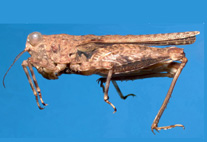Abstract
Rumen contents were collected from ten adult female blesbok, five from a mine area with only acid drinking water available and five from a control group consuming normal, non-polluted drinking water. The mean concentration of total protozoa in the normal water group was almost double that in the acid drinking water group, 24.9 x 103 versus 14.7 x 103 . Percent of Entodinium was higher and Diplodinium lower in those animals drinking the acid water. The number of different protozoa species present in animals from both locations was fairly similar. Diplodinium bubalidis, Ostracodinium gracile and Diplodinium consors were present in the highest percentage in the normal water group, 18.8, 18.4 and 17.7 %, respectively. The same three species, plus Entodinium dubardi, were also highest in the acid water group, O. gracile, 21.3 %; D. consors, 12.6 %; E. dubardi, 11.4 % and D. bubalidis, 10.3 %. Seventeen species of protozoa found in this study were a new host record for the blesbok, bringing the total number of species reported from the blesbok to 29.

